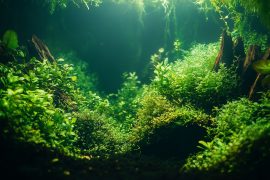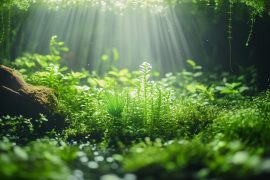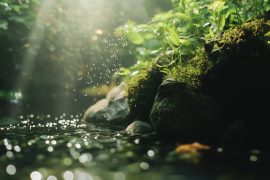The most expensive item in my first “proper” aquascape wasn’t the tank, lighting, or even the rare plants I’d mail-ordered from three different specialty shops. It was the driftwood—a gnarly piece of Malaysian wood that cost a staggering $87. I’d driven two hours to a specialty shop, spent another hour selecting the “perfect” piece, then handed over nearly a hundred dollars for what was, essentially, a fancy stick.
On the drive home, I kept glancing at my passenger seat where the wood sat buckled in like a precious child, wondering if I’d completely lost my mind. That moment marked the beginning of my complicated relationship with the economics of aquascaping. This hobby can be breathtakingly expensive when approached conventionally.
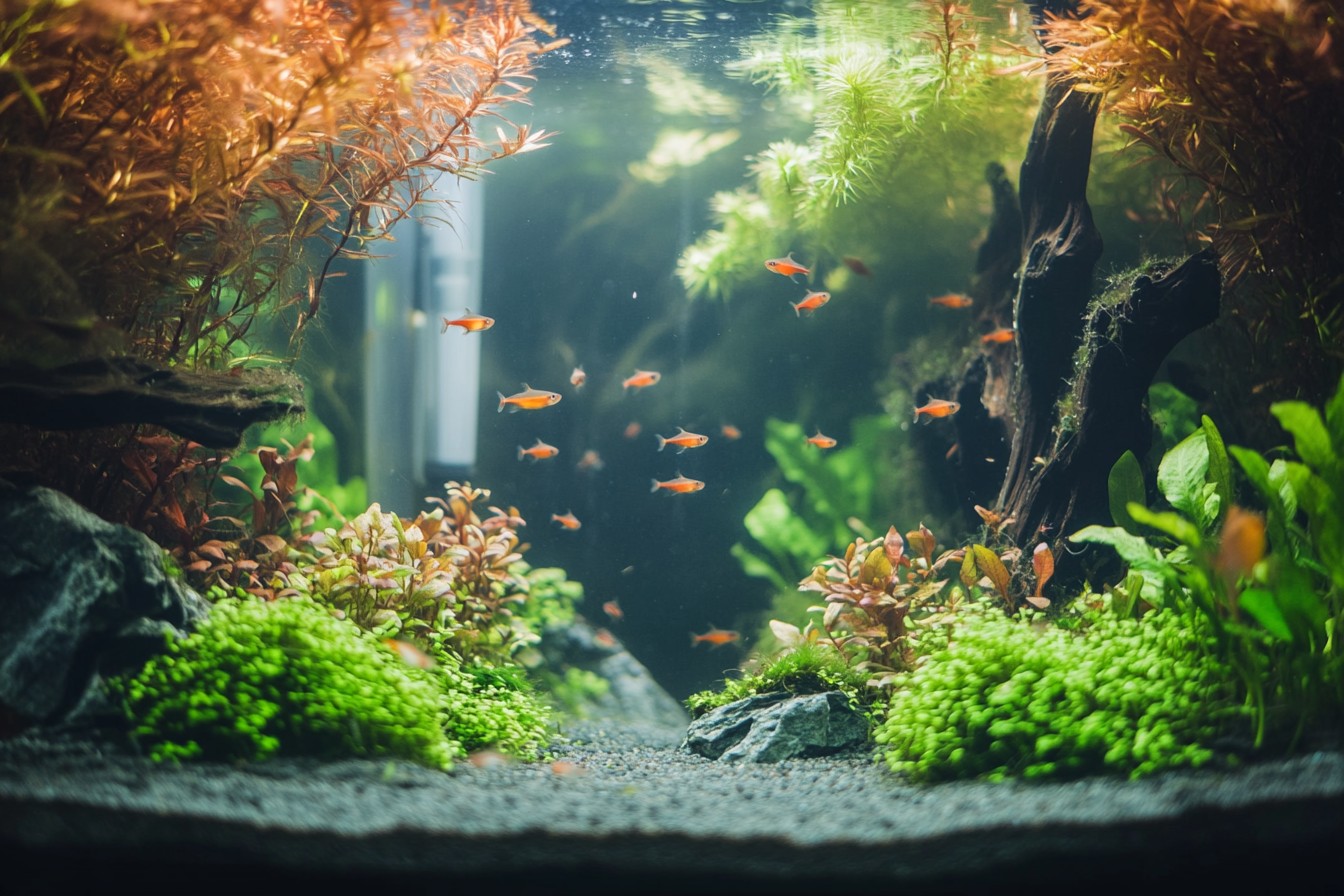
Branded aquascaping tools, designer hardscape materials, tissue-cultured plants, high-end filters and lights—follow the standard advice, and you’ll empty your bank account before you’ve filled your tank. My early setups followed this path, with predictably painful results for my finances. The turning point came during my second year of graduate school, when my research stipend was cut unexpectedly.
Faced with the choice between maintaining my aquascaping habit and, you know, eating, I had to radically rethink my approach. What started as a reluctant compromise became a creative awakening—I discovered that budget constraints often produced more innovative, unique aquascapes than unlimited funds. Let’s start with the tank itself.
New, brand-name aquariums command premium prices, especially rimless designs. Meanwhile, perfectly usable tanks circulate through the secondhand market at fraction of retail cost. Local fish stores often have used tanks in their back rooms.
Craigslist and Facebook Marketplace regularly feature setups from hobbyists leaving the hobby (temporarily—we always come back). My current favorite display tank—a 75-gallon with perfect dimensions for Dutch-style planting—cost $60 including the stand, roughly 15% of new retail value. There’s a persistent myth that used tanks are risky, prone to catastrophic leaks and cracks.
In my experience with dozens of secondhand tanks, this fear is vastly overblown. A simple water test in a safe outdoor area reveals any existing problems, and minor resealing is a straightforward DIY project requiring only silicone sealant and patience. That said, I avoid tanks over ten years old, as silicone does degrade over time.
The hardware supporting your aquascape—filters, heaters, lights—represents another major expense category ripe for optimization. While I never compromise on heater quality (a failed heater can cook your entire tank overnight), filters and lights offer substantial savings opportunities through alternative approaches. For filtration, the humble sponge filter driven by an air pump provides biological and mechanical filtration at a fraction of the cost of canister systems.
My 40-gallon breeder tank has run successfully for years on nothing more than a $12 sponge filter powered by a $20 air pump. The gentle flow actually benefits many plant species that struggle with the stronger currents from power filters. For larger displays where more flow is necessary, I’ve had excellent results with off-brand canister filters costing about 40% of premium brands.
Lighting presented my greatest budget challenge and most satisfying solution. High-end aquarium lights with programmable features can easily cost hundreds of dollars. Meanwhile, the horticultural industry produces perfectly suitable LED grow lights at substantially lower price points.
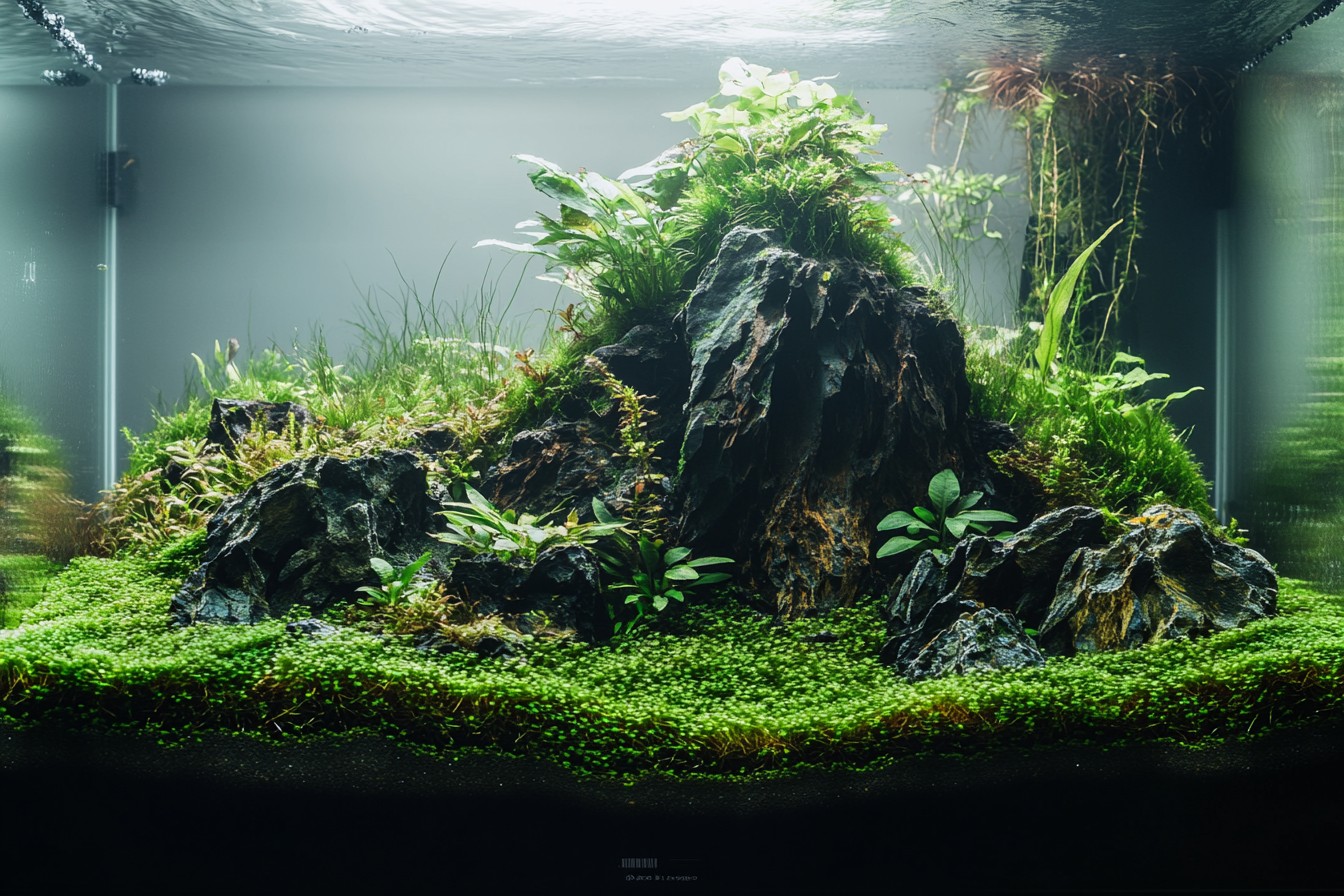
After significant research and testing, I found that shop lights with 6500K LED tubes mounted on DIY risers provide excellent plant growth in standard-depth tanks. My 120-gallon Dutch-inspired tank thrives under four such fixtures costing $29 each—about one-fifth the price of aquarium-specific lighting with comparable output. For high-tech setups requiring CO2 injection, the savings potential is enormous.
Commercial aquarium CO2 systems represent some of the most egregious markup in the hobby. Meanwhile, identical technology serves the home brewing market at a fraction of the cost. My current CO2 setup—a 5lb cylinder, dual-stage regulator with solenoid, bubble counter, and diffuser—cost approximately $130 assembled from brewing components and generic aquarium parts.
The equivalent “aquarium brand” system would exceed $350. Hardscape materials—driftwood and stone—typically command the highest per-pound prices in the hobby, yet often require minimal processing from source to store. The markup on these natural materials borders on absurd.
After my $87 driftwood awakening, I began exploring alternative sourcing. Legal collection from public lands (where permitted) offers free materials with unique character. I’ve found stunning pieces while hiking in national forests, though always researching regulations beforehand.
For those without collection opportunities, landscape supply yards sell bulk stone at 10-20% of aquarium store prices. My favorite seiryu-style stones cost $0.75 per pound from a local rockery, compared to $8-12 per pound from aquarium retailers. Not all collected materials are suitable for aquariums.
Proper preparation is essential to prevent harmful compounds from leaching into your water. For collected wood, I follow a multi-step process: removing bark, boiling smaller pieces or soaking larger ones for 2-3 weeks with frequent water changes, then a final curing period in fresh water with water parameter testing. For stones, the vinegar test (applying a drop of vinegar to spot possible calcium content) helps identify rocks that might affect water hardness, and thorough cleaning removes potential contaminants.
For substrate, specialized planted tank products command premium prices while often performing identically to more affordable alternatives. After experimenting with nearly every substrate on the market, I’ve settled on a layered approach using organic potting soil capped with fine gravel or sand. This combination costs roughly $15 for a 40-gallon tank, compared to $80+ for name-brand planted substrates covering the same area.
The growth results are indistinguishable, and in some cases superior due to the soil’s complete nutrient profile. Plant selection and sourcing represents perhaps the largest potential for budget optimization. Tissue culture cups costing $8-15 each add up alarmingly fast when designing a densely planted layout.
Meanwhile, a single plant portion can be propagated into dozens through patience and basic techniques. I maintain what I call “propagation tanks”—simple, low-tech setups where I grow out plant portions for future projects. A $10 tissue culture cup of Staurogyne repens grew into enough plants to carpet three tanks within six months.
The initial investment in time yields years of free plants. Local aquarium clubs and hobbyist forums offer another rich source of affordable plants. Fellow enthusiasts often trade or sell excess growth at nominal prices.
I’ve acquired rare plants worth $30+ through trades using propagated portions of common species. These connections build community while reducing costs—a double benefit that improves the hobby experience beyond mere financial savings. For those without access to local clubs, r/AquaSwap on Reddit and the Aquatic Plant Central forums host vibrant trading communities where plants often exchange hands for little more than the cost of shipping.
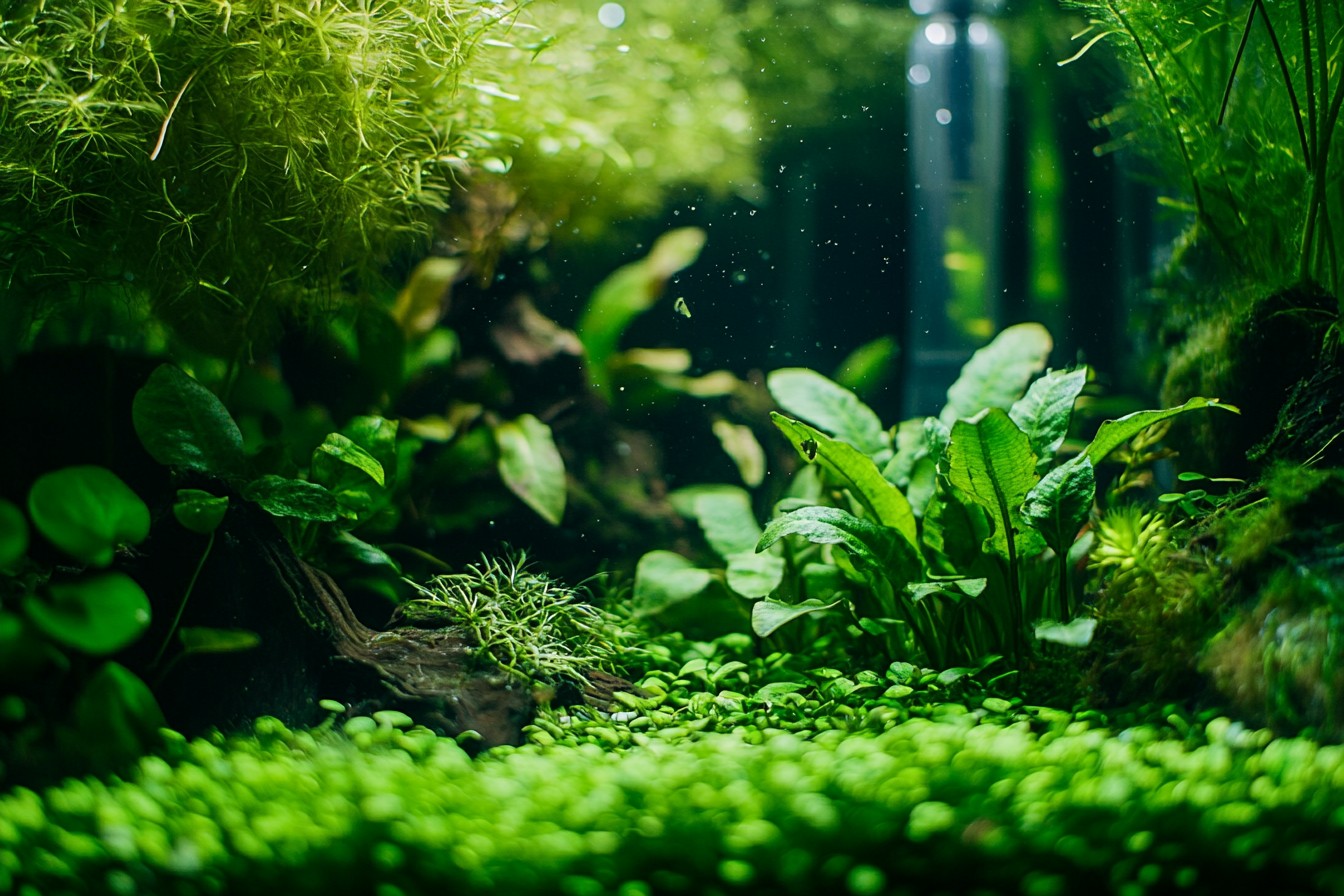
I’ve both received and shared plants through these channels, finding varieties unavailable in commercial channels while clearing excess growth from my established tanks. Fish and invertebrates present a different budgeting challenge. Unlike plants, animals cannot be propagated quite so easily (though breeding projects offer their own rewards).
Here, patience becomes the budget aquascaper’s greatest ally. I maintain a list of desired species and wait for local store sales rather than impulsively purchasing at full price. Many retailers offer periodic discounts of 20-30%, substantially reducing stocking costs for those willing to time their purchases.
For truly specialized species, connecting directly with breeders through aquarium clubs or online forums often yields better specimens at lower prices than retail channels. My cherished group of celestial pearl danios came directly from a local breeder, costing half the pet store price while showing superior coloration and health. Maintenance supplies offer surprising savings opportunities for budget-conscious aquascapers.
Commercial water conditioners, plant fertilizers, and testing supplies carry substantial markups. DIY alternatives exist for many of these products. I mix my own fertilizers using dry chemicals at approximately 10% of the cost of pre-mixed commercial versions.
A $50 investment in dry fertilizer components has lasted over two years across multiple tanks, replacing what would have been hundreds of dollars in liquid fertilizers. Perhaps the greatest budget aquascaping secret involves time arbitrage—investing time to save money. Many premium products essentially charge for convenience.
Pre-filtered water, commercially cured wood, tissue-cultured plants, and prepared hardscape materials all command premium prices for saving time rather than offering fundamentally superior results. By handling these processes myself, I trade hours for dollars—a worthwhile exchange, especially when those hours involve engaging with the hobby I love. The most valuable perspective shift came when I stopped seeing budget aquascaping as a compromise and started recognizing it as a design parameter that often produces more creative results.
Working with found materials or adapting non-aquarium products forces innovative thinking that premium products might never inspire. My most frequently complimented hardscape wasn’t the $87 driftwood but a twisted piece of oak root I found while hiking and prepared myself. This isn’t to suggest that all premium aquascaping products lack value.
Certain high-end tools, specialty plants, and precision equipment may justify their cost for specific applications. The key is distinguishing between necessary investments and luxury expenditures. My aquascaping scissors—a Japanese steel pair that cost more than I’m comfortable admitting—have lasted seven years of daily use without dulling.
That longevity justifies the premium over cheaper alternatives that would need frequent replacement. Budget aquascaping doesn’t mean creating inferior displays. It means approaching the hobby with resourcefulness, patience, and creativity—qualities that often produce more interesting results than simply purchasing the most expensive option for every component.
Some of the most stunning aquascapes I’ve created or encountered emerged from financial constraints that forced innovative solutions rather than conventional approaches. That $87 piece of driftwood still resides in one of my tanks, a reminder of both my early excesses and how far my approach has evolved. Beside it sits a 120-gallon Dutch-inspired planted display that professional aquascapers have complimented during local club meetings.
Total hardware cost? Under $400, roughly a quarter of what conventional wisdom says such a setup should cost. The results speak for themselves, proving that in aquascaping—as in life—creativity and patience often matter more than raw spending power.

